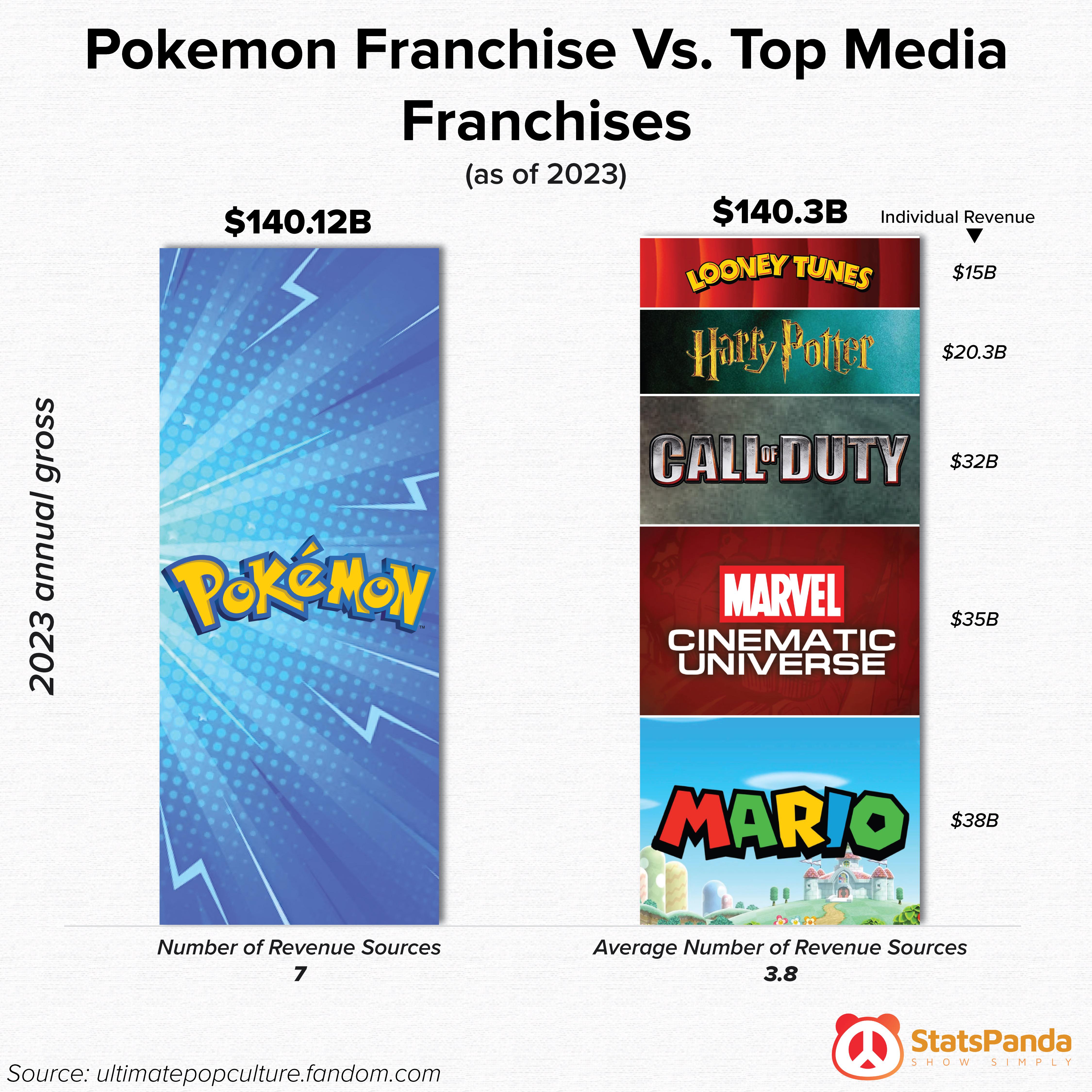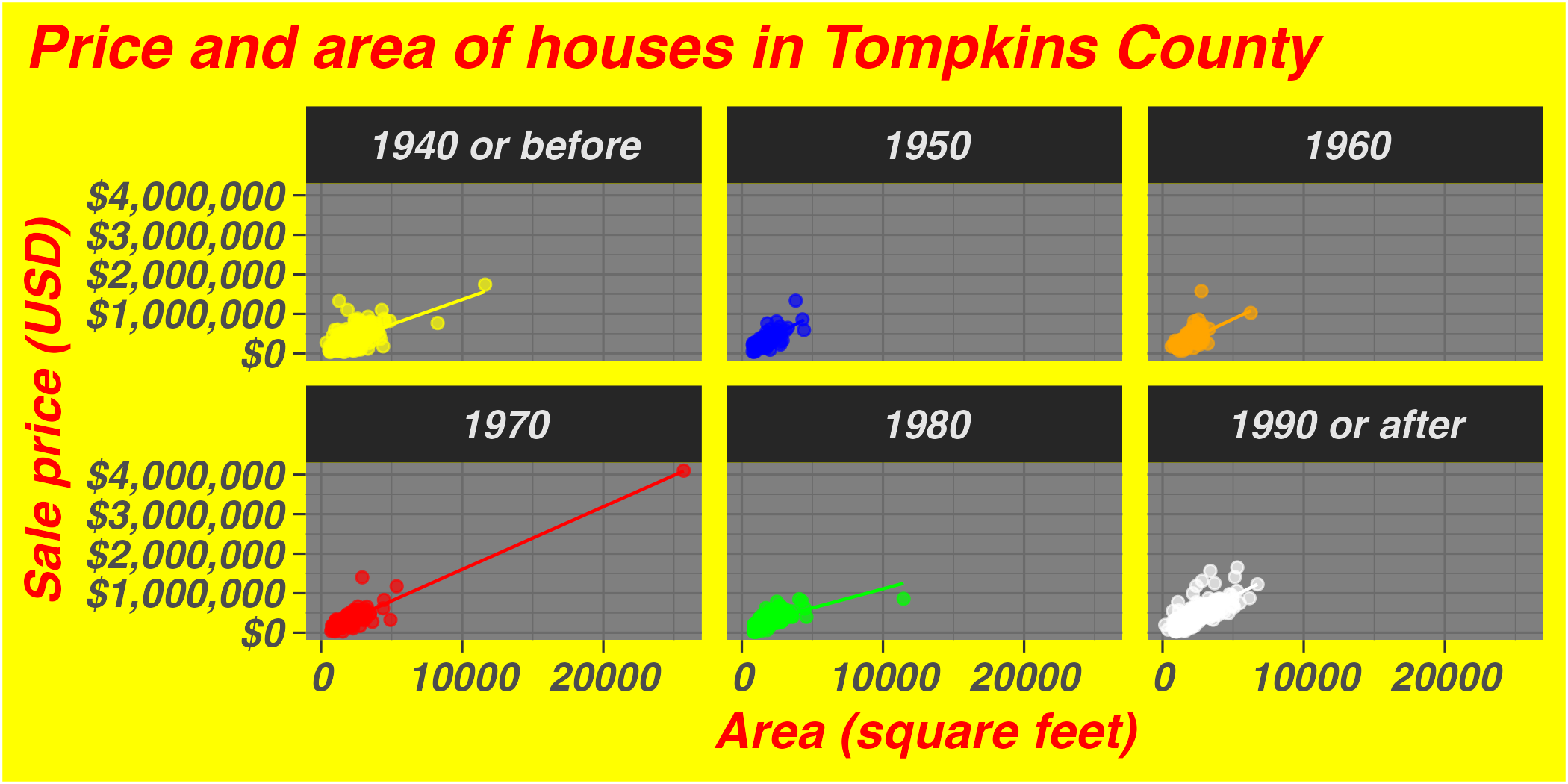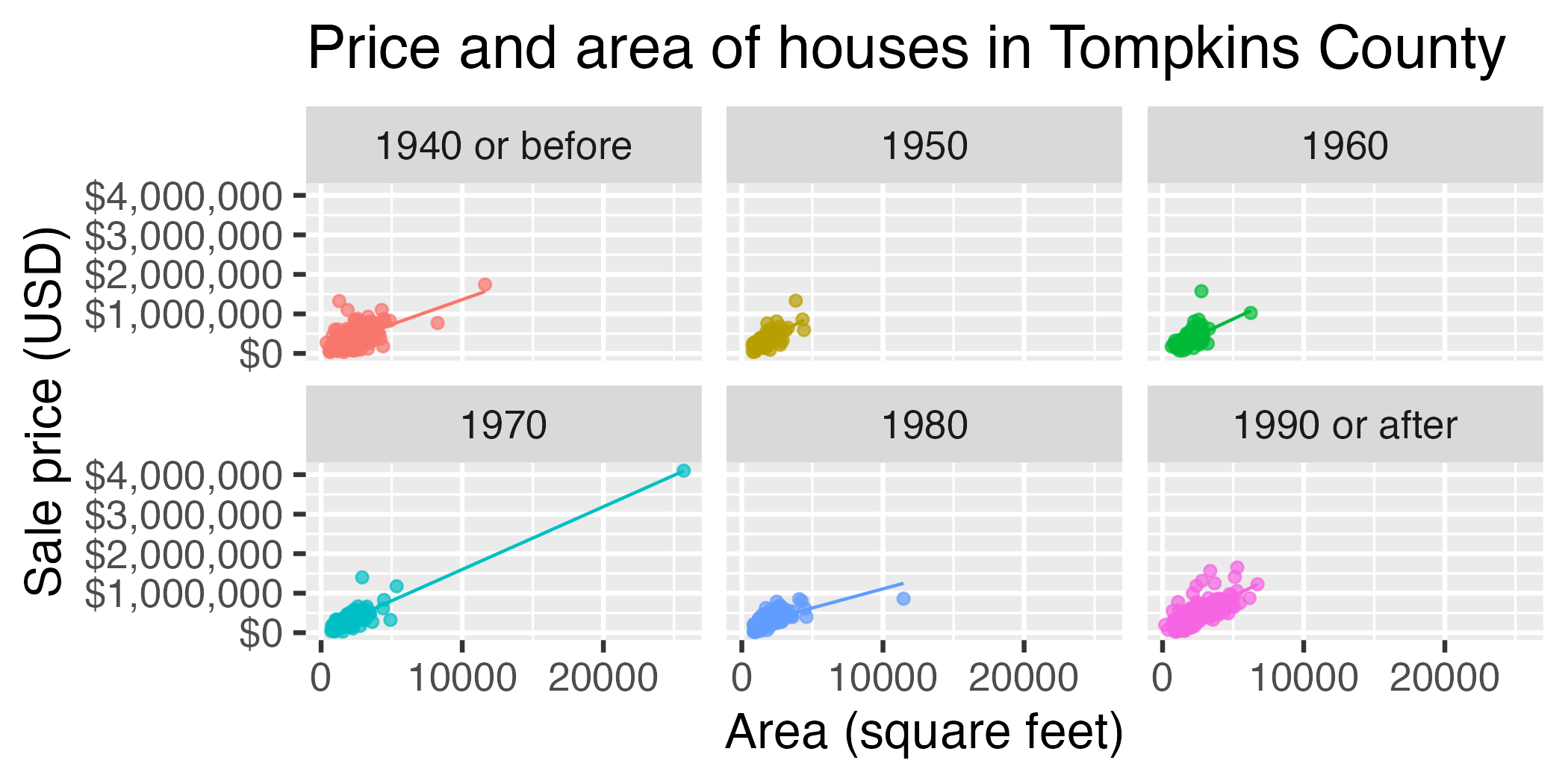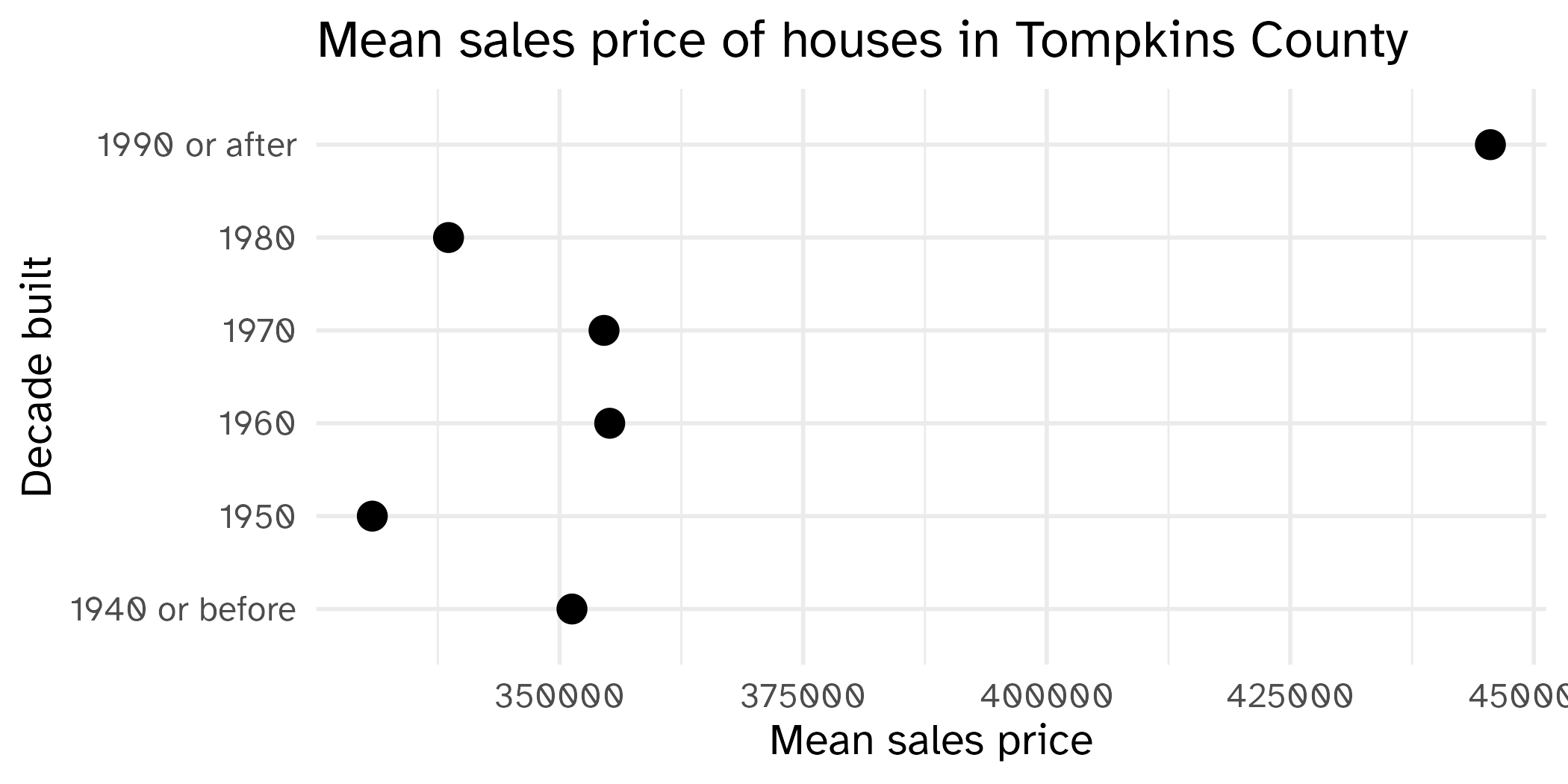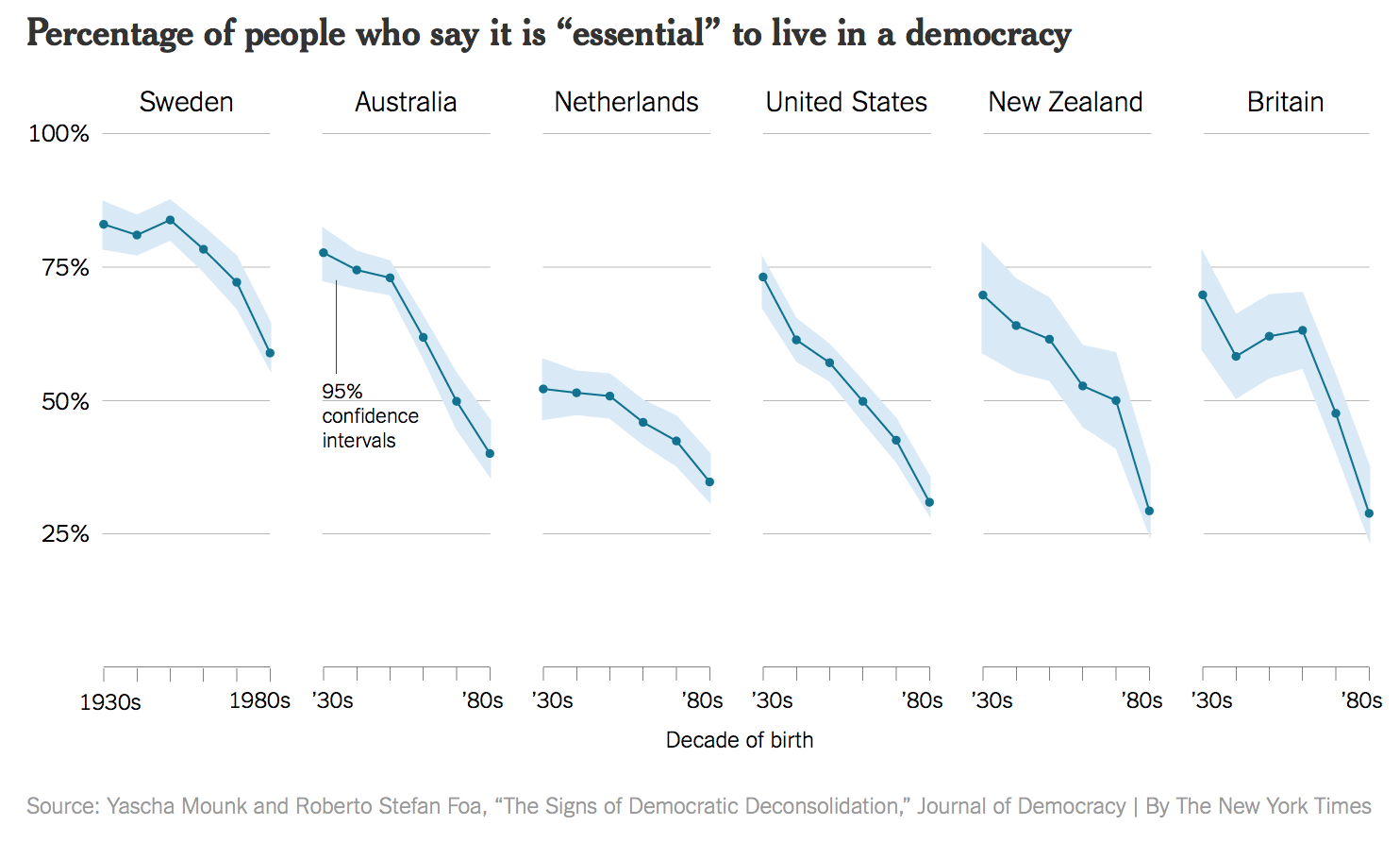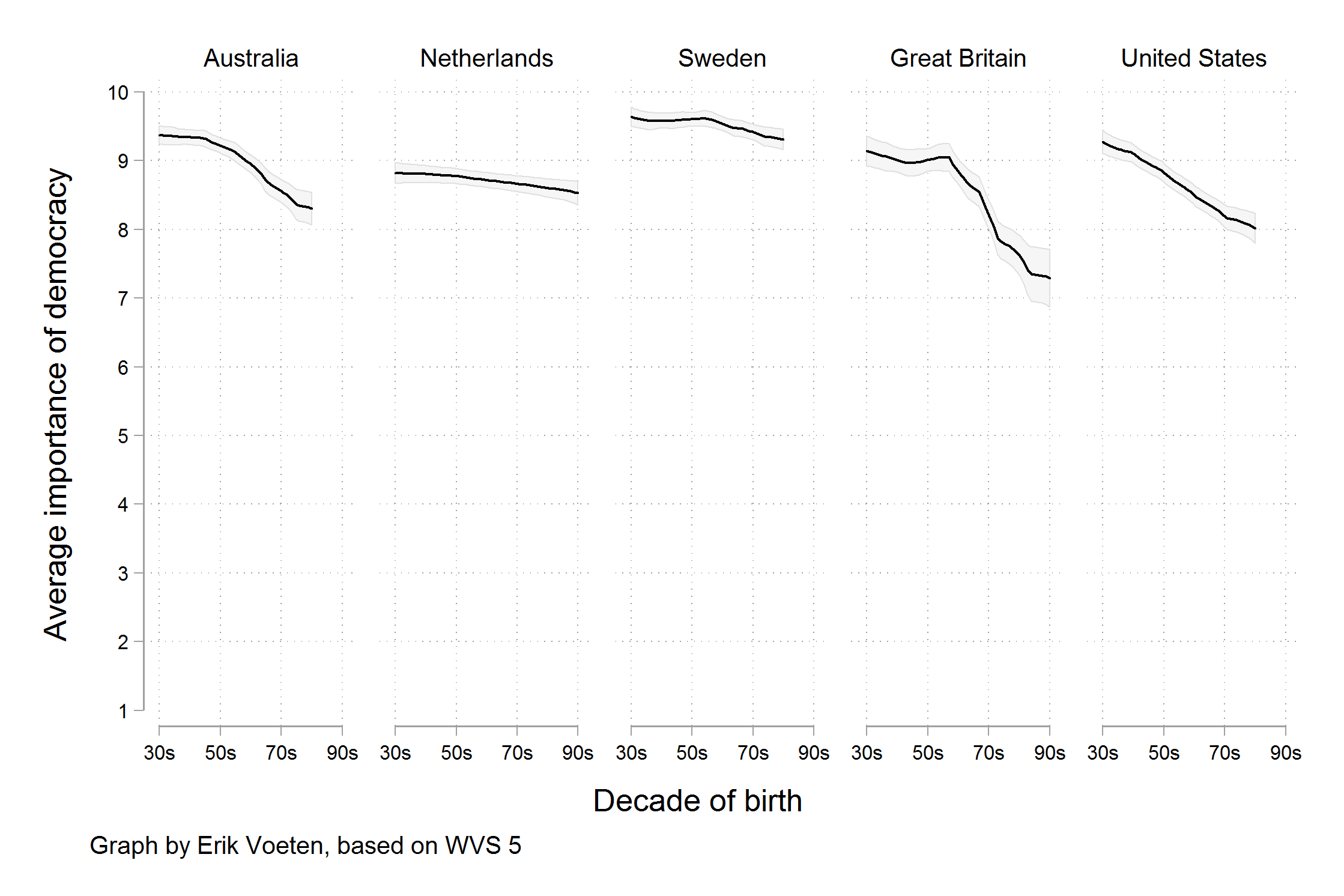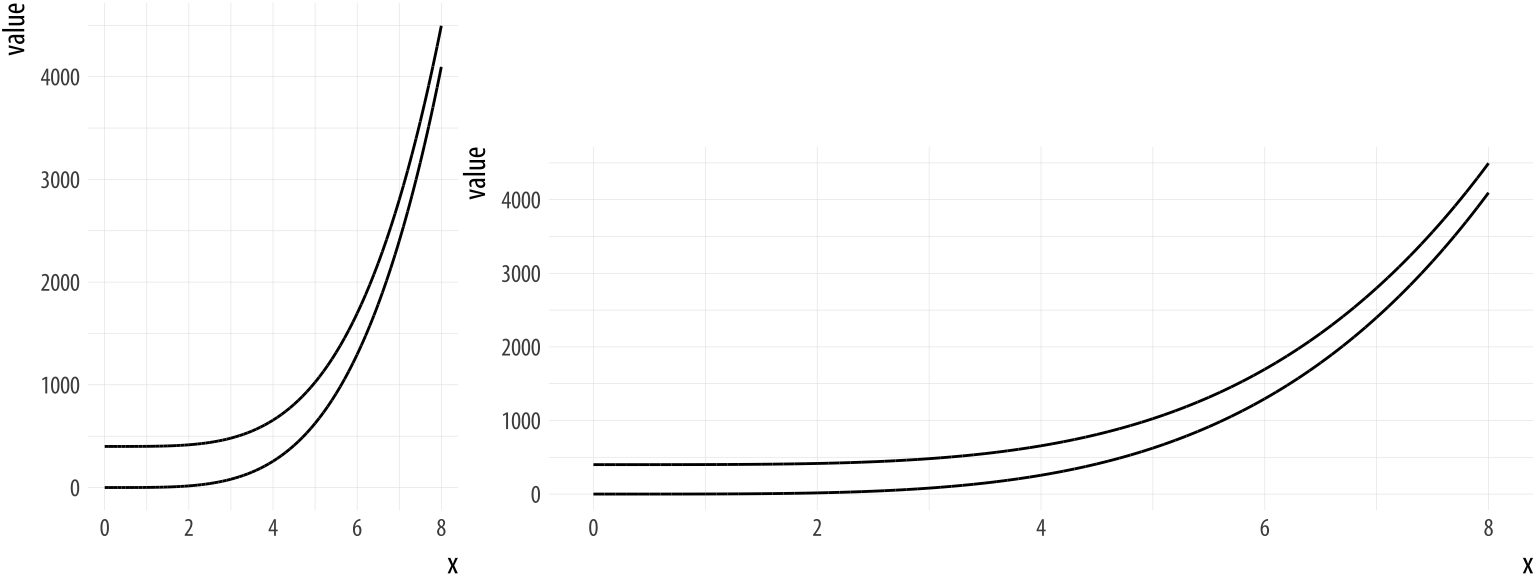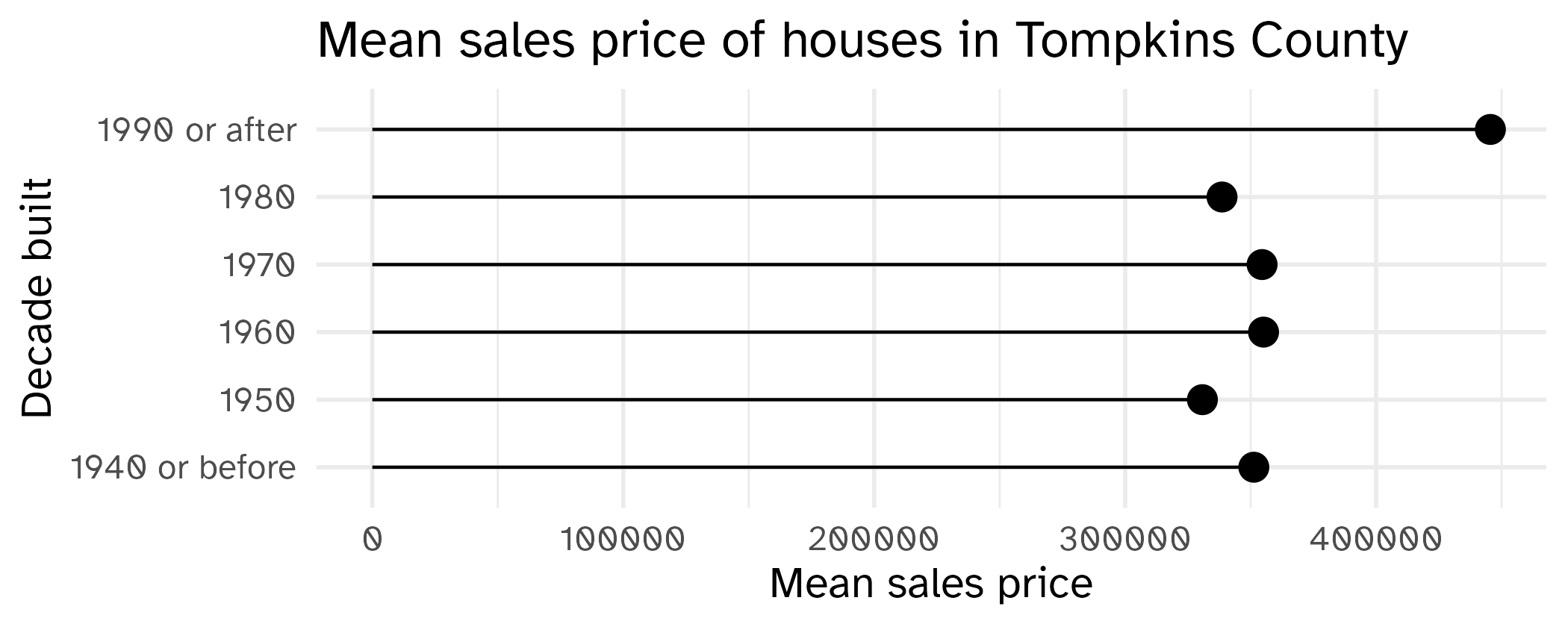Rows: 1,270
Columns: 12
$ sold_date <date> 2022-09-12, 2022-09-12, 2022-09-12, 2022-09-13, 2022-07-22, 2022-03-15, 2022…
$ price <dbl> 340000, 390000, 625500, 246600, 172000, 205000, 230000, 246000, 350000, 44650…
$ beds <dbl> 2, 4, 2, 2, NA, 2, 5, 5, 3, 5, 3, 2, 2, 4, 3, 5, 4, 3, 4, 3, 3, 3, 6, 2, 3, 3…
$ baths <dbl> 3.0, 3.0, 3.0, 1.5, NA, 1.0, 2.0, 2.0, 2.5, 4.0, 1.0, 1.5, 2.0, 2.5, 2.5, 3.0…
$ area <dbl> 1864, 3252, 1704, 1264, 2644, 820, 2900, 2364, 2016, 2882, 1246, 1134, 1720, …
$ lot_size <dbl> 4.50000000, 0.33999082, 65.00000000, 0.21000918, 0.13000459, 0.23999082, 5.66…
$ year_built <dbl> 1999, 1988, 1988, 1953, 1870, 1932, 1850, 1985, 1984, 2002, 1961, 2014, 1931,…
$ hoa_month <dbl> NA, NA, NA, NA, NA, NA, NA, NA, NA, NA, NA, NA, NA, NA, NA, NA, NA, NA, NA, 2…
$ town <chr> "Newfield", "Ithaca", "Dryden", "Ithaca", "Dryden", "Ithaca", "Lansing", "Dry…
$ municipality <chr> "Unincorporated", "Unincorporated", "Unincorporated", "Ithaca city", "Dryden …
$ long <dbl> -76.59488, -76.45546, -76.35953, -76.52435, -76.29872, -76.48761, -76.59422, …
$ lat <dbl> 42.38609, 42.47046, 42.43971, 42.45208, 42.49046, 42.42739, 42.61829, 42.4862…Deep dive: layers (I)
Lecture 3
Cornell University
INFO 3312/5312 - Spring 2026
January 27, 2026
Announcements
Announcements
- Homework 01 due tomorrow
- Submitting computational AEs – commit and push to your repo by 11:59pm today
Learning objectives
- Identify reasons for what makes bad figures look “bad”
- Introduce principles of visual perception
- Assess competing graphs for their adherence to principles of visual perception
- Create a lollipop chart using {ggplot2}
Visualization critique
Gotta catch ’em all
Source: r/dataisbeautiful
A/B testing
Data: Sale prices of houses in Tompkins County
Data on houses that were sold in Tompkins County, NY from 2022-24
Scraped from Redfin
Import the data
A simple visualization
New variable: decade_built
# A tibble: 1,270 × 2
year_built decade_built
<dbl> <dbl>
1 1999 1990
2 1988 1980
3 1988 1980
4 1953 1950
5 1870 1870
6 1932 1930
7 1850 1850
8 1985 1980
9 1984 1980
10 2002 2000
# ℹ 1,260 more rowsNew variable: decade_built_cat
# A tibble: 6 × 2
decade_built_cat n
<chr> <int>
1 1940 or before 443
2 1950 117
3 1960 120
4 1970 136
5 1980 143
6 1990 or after 311A slightly more complex visualization
ggplot(
tompkins,
aes(x = area, y = price, color = decade_built_cat)
) +
geom_point(alpha = 0.7, show.legend = FALSE) +
geom_smooth(method = "lm", se = FALSE, linewidth = 0.5, show.legend = FALSE) +
scale_y_continuous(labels = label_dollar()) +
facet_wrap(facets = vars(decade_built_cat)) +
labs(
x = "Area (square feet)",
y = "Sale price (USD)",
color = "Decade built",
title = "Price and area of houses in Tompkins County"
)
A/B testing
Activity
In the next two slides, the same plots are created with different “cosmetic” choices.
Test 1
Test 2
What makes figures bad?
Bad taste

Data-to-ink ratio
Tufte strongly recommends maximizing the data-to-ink ratio this in the Visual Display of Quantitative Information (Tufte, 1983).
Graphical excellence is the well-designed presentation of interesting data—a matter of substance, of statistics, and of design … [It] consists of complex ideas communicated with clarity, precision, and efficiency. … [It] is that which gives to the viewer the greatest number of ideas in the shortest time with the least ink in the smallest space … [It] is nearly always multivariate … And graphical excellence requires telling the truth about the data. (Tufte, 1983, p. 51).
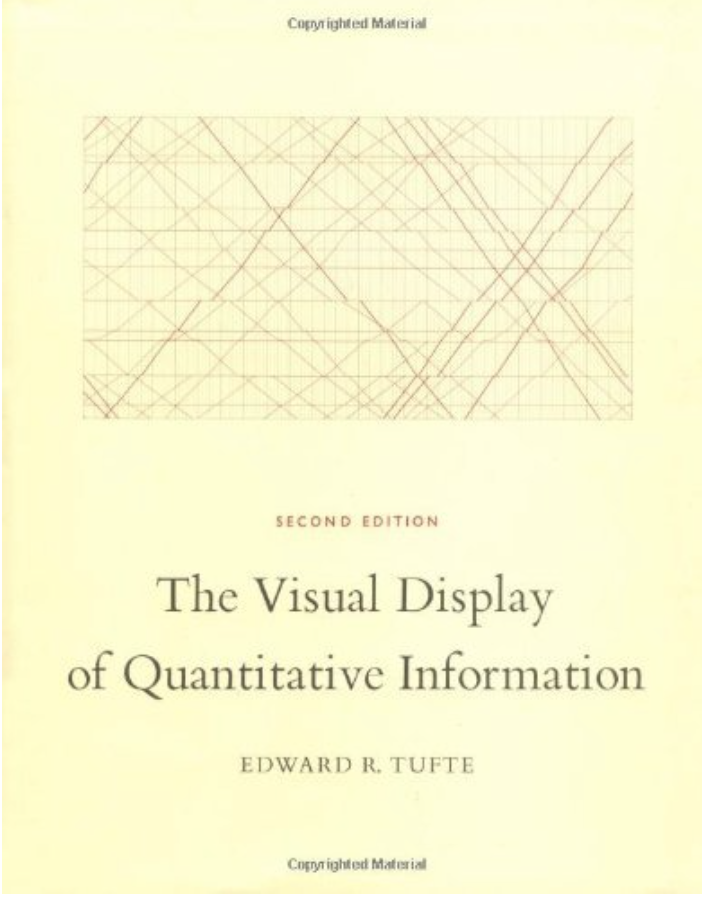
Which of the plots has a higher data-to-ink ratio?
Summary statistics
Barplot
Scatterplot

Lollipop chart – a happy medium?

Application exercise
ae-02
Instructions
- Go to the course GitHub org and find your
ae-02(repo name will be suffixed with your GitHub name). - Clone the repo in Positron, run
renv::restore()to install the required packages, open the Quarto document in the repo, and follow along and complete the exercises. - Render, commit, and push your edits by the AE deadline – end of the day
10:00
Bad data
Source: socviz Chapter 1. Figures 1.8 and 1.9.
Bad perception
Source: socviz Chapter 1. Figure 1.12.
Aesthetic mappings in {ggplot2}
A second look: lollipop chart
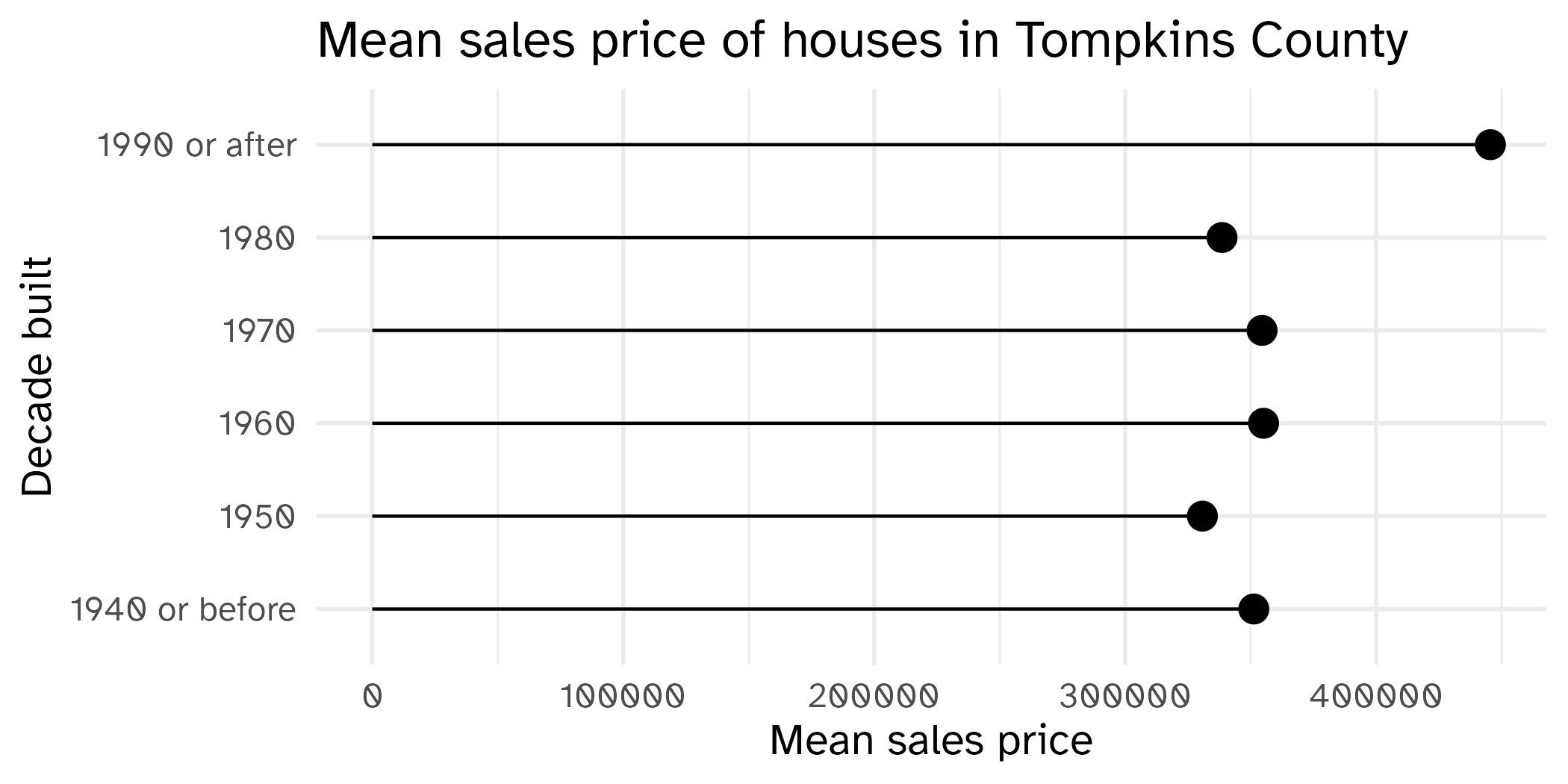
ggplot(
mean_price_decade,
aes(y = decade_built_cat, x = mean_price)
) +
geom_point(size = 4) +
geom_segment(
mapping = aes(
x = 0, xend = mean_price,
y = decade_built_cat, yend = decade_built_cat
)
) +
labs(
x = "Mean sales price", y = "Decade built",
title = "Mean sales price of houses in Tompkins County"
)Activity: Spot the differences I
Can you spot the differences between the code here and the one provided in the previous slide? Are there any differences in the resulting plot? Work with a partner to answer.
01:00
Global vs. layer-specific aesthetics
Aesthetic mappings can be supplied in the initial
ggplot()call, in individual layers, or in some combination of both.Within each layer, you can add, override, or remove mappings.
If you only have one layer in the plot, the way you specify aesthetics doesn’t make any difference. However, the distinction is important when you start adding additional layers.
Activity: Spot the differences II
Do you expect the following plots to be the same or different? If different, how? Discuss in a group without running the code.
02:00
Wrap up
Recap
- Data visualizations can be bad for aesthetic, substantive, or perceptual reasons
- {ggplot2} graphs are constructed from layers
- Custom charts can be generated by combining multiple layers
Acknowledgements
- Slides derived in part from STA 313: Advanced Data Visualization
Something personal
TODO
